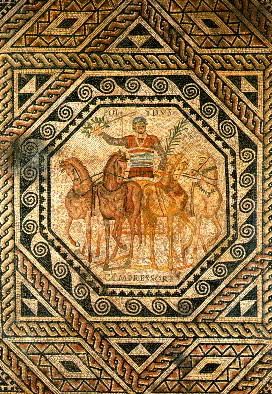DianeOD
Gee.
I suppose its not that I object, but I've never needed to consider the images as mere illustrations, because from the first, I've known they weren't.
I mean, the reason I first became interested in them, was that I saw exactly the *astronomical* characters being represented. They were entirely familiar, because used as literary 'types' for so many millennia in the eastern world, and earlier in western Christianity.
I really liked the skill with which the component stars for each star-figure in the Charles VI cards had been 'named' so precisely by the figure's devices, too.
For me, this argument for-or-against the images being *about* rather than *of* something is like saying that - oh.. what's a medieval example ...- o.k. like if I pointed to a picture and said to a Buddhist, "this is a statue of Saint Sebastian" and then had to argue why it couldn't better just be called a man being executed by arrow-shots.
Doesn't matter how many bits of text are produced, proving that lots of people were shot with arrows .. if you know what the image refers to because its entirely familiar - then you do.
it all comes back to historical continuity, and the way that continuity *creates* context for artefacts created in specific places and times.
At the end of the 13thC (or end of the 14th, if you prefer), the normal way to reach an image was in terms of what it signified; then individual signifiers were "read" for reference to specific passages of well-known texts.
So - what was 'seen' in these images by late medieval Christians?
To say when they saw a fool, they 'saw a fool' - and no more - is anachronistic to that period, in my view.
I've written up part of the section where I analysed the Fool image. Its roughly half the original material, but I felt the rest would be irrelevant for western audiences chiefly interested in cards, not the ways by which the eastern *astronomical* lore reached the west.
I'll go and look at your threads, jmd.
Where we agree, I'll be happy to say so.
I suppose its not that I object, but I've never needed to consider the images as mere illustrations, because from the first, I've known they weren't.
I mean, the reason I first became interested in them, was that I saw exactly the *astronomical* characters being represented. They were entirely familiar, because used as literary 'types' for so many millennia in the eastern world, and earlier in western Christianity.
I really liked the skill with which the component stars for each star-figure in the Charles VI cards had been 'named' so precisely by the figure's devices, too.
For me, this argument for-or-against the images being *about* rather than *of* something is like saying that - oh.. what's a medieval example ...- o.k. like if I pointed to a picture and said to a Buddhist, "this is a statue of Saint Sebastian" and then had to argue why it couldn't better just be called a man being executed by arrow-shots.
Doesn't matter how many bits of text are produced, proving that lots of people were shot with arrows .. if you know what the image refers to because its entirely familiar - then you do.
it all comes back to historical continuity, and the way that continuity *creates* context for artefacts created in specific places and times.
At the end of the 13thC (or end of the 14th, if you prefer), the normal way to reach an image was in terms of what it signified; then individual signifiers were "read" for reference to specific passages of well-known texts.
So - what was 'seen' in these images by late medieval Christians?
To say when they saw a fool, they 'saw a fool' - and no more - is anachronistic to that period, in my view.
I've written up part of the section where I analysed the Fool image. Its roughly half the original material, but I felt the rest would be irrelevant for western audiences chiefly interested in cards, not the ways by which the eastern *astronomical* lore reached the west.
I'll go and look at your threads, jmd.
Where we agree, I'll be happy to say so.



